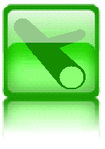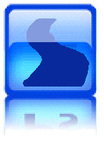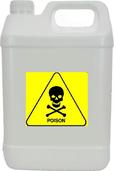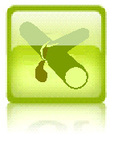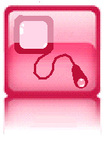Alberts Home & Help
Drain Cleaning
A drain cleaner is a consumer product or device that unblocks sewer pipes or helps to prevent the occurrence of clogged drains it can also be a term that refers to a person who is employed as a drain cleaner. Drain cleaners can be classified in three categories, according to their intended use.
When performing preventative drain cleaning to reduce the future occurrence of clogs, enzymatic drain cleaners and sewer jetters are normally used.
Each type of drain cleaner has advantages, disadvantages, and safety considerations as described below
Chemical drain cleaners
Chemical drain cleaners include liquid and solid corrosive drain cleaners that are readily available through retail stores, as well as acid drain cleaners that are intended primarily for use by licensed plumbers.
Liquid formulations of corrosive drain cleaners can contain sodium hypochlorite NaOCl (bleach), sodium hydroxide (lye), or potassium hydroxide (caustic potash) in concentrations up to 50 percent. Other corrosive mixtures come as two-part cleaners that are mixed as they are poured in the drain opening. Inside the drain the two solutions react to release a gas, and surfactants trap the gas as dense foam. The intent of this foaming action is to coat the inside of the drain pipe to dislodge more of the substances that form the clog.
Corrosive Drain Cleaner, Solid Formulation Solid formulations of corrosive drain cleaners in the form of sodium hydroxide or potassium hydroxide granules can provide more concentrated effective ingredients. Some patented, solid-formula cleaners add aluminum turnings that react with to the solid hydroxide in water to heat the caustic mixture to a boil.
Acid drain cleaners based on concentrated Sulphuric Acid,(c 80% strength) are intended primarily for use by licensed plumbers because of safety considerations. According to one manufacturer, potential hazards include violent reaction with water and the production of explosive hydrogen vapors upon contact with most metals; chronic (delayed) and acute (immediate) health hazards if inhaled, ingested, or contacted by skin including severe eye and skin burns, inflammation of respiratory membranes, and corrosive burns to all human tissue; permanent visual loss upon contact with eyes; and death if swallowed.
Advantages of chemical drain cleaners include ready availability of some formulations through retailer stores and potential ease of use for removing soft hair and grease clogs that accumulate close to drain openings.
Disadvantages of chemical drain cleaners include a lack of effectiveness for removing clogs far from the drain opening (for example, clogs that occur in toilets or in the main sewer drain), an inability to remove most solid obstructions, and the safety considerations outlined below.
Safety considerations for chemical drain cleaners, the danger arises from their potential to injure eyes, lungs and skin and damage to clothing and household materials such as wood, paint, aluminum and fiberglass. Chemical drain cleaners should be used only according to the manufacturer's instructions, as other use may cause injury. Strongly corrosive and acid drain cleaners are among the most hazardous household products available to the public.
- If a single sink, toilet, bath or shower drain is clogged the first choice is normally a drain cleaner that can remove soft obstructions such as hair and grease clogs that can accumulate close to interior drain openings. Chemical drain cleaners, plungers, handheld drain augers, air burst drain cleaners, and home remedy drain cleaners are intended for this purpose.
- If more than one plumbing fixture is clogged the first choice is normally a drain cleaner that can remove soft or hard obstructions along the entire length of the drain, from the drain opening through the main sewer drain to the lateral piping outside the building. Electric drain cleaners and sewer jetters are intended for this purpose.
When performing preventative drain cleaning to reduce the future occurrence of clogs, enzymatic drain cleaners and sewer jetters are normally used.
Each type of drain cleaner has advantages, disadvantages, and safety considerations as described below
Chemical drain cleaners
Chemical drain cleaners include liquid and solid corrosive drain cleaners that are readily available through retail stores, as well as acid drain cleaners that are intended primarily for use by licensed plumbers.
Liquid formulations of corrosive drain cleaners can contain sodium hypochlorite NaOCl (bleach), sodium hydroxide (lye), or potassium hydroxide (caustic potash) in concentrations up to 50 percent. Other corrosive mixtures come as two-part cleaners that are mixed as they are poured in the drain opening. Inside the drain the two solutions react to release a gas, and surfactants trap the gas as dense foam. The intent of this foaming action is to coat the inside of the drain pipe to dislodge more of the substances that form the clog.
Corrosive Drain Cleaner, Solid Formulation Solid formulations of corrosive drain cleaners in the form of sodium hydroxide or potassium hydroxide granules can provide more concentrated effective ingredients. Some patented, solid-formula cleaners add aluminum turnings that react with to the solid hydroxide in water to heat the caustic mixture to a boil.
Acid drain cleaners based on concentrated Sulphuric Acid,(c 80% strength) are intended primarily for use by licensed plumbers because of safety considerations. According to one manufacturer, potential hazards include violent reaction with water and the production of explosive hydrogen vapors upon contact with most metals; chronic (delayed) and acute (immediate) health hazards if inhaled, ingested, or contacted by skin including severe eye and skin burns, inflammation of respiratory membranes, and corrosive burns to all human tissue; permanent visual loss upon contact with eyes; and death if swallowed.
Advantages of chemical drain cleaners include ready availability of some formulations through retailer stores and potential ease of use for removing soft hair and grease clogs that accumulate close to drain openings.
Disadvantages of chemical drain cleaners include a lack of effectiveness for removing clogs far from the drain opening (for example, clogs that occur in toilets or in the main sewer drain), an inability to remove most solid obstructions, and the safety considerations outlined below.
Safety considerations for chemical drain cleaners, the danger arises from their potential to injure eyes, lungs and skin and damage to clothing and household materials such as wood, paint, aluminum and fiberglass. Chemical drain cleaners should be used only according to the manufacturer's instructions, as other use may cause injury. Strongly corrosive and acid drain cleaners are among the most hazardous household products available to the public.
Home remedy drain cleaners
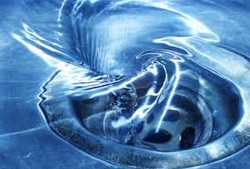
Home remedy drain cleaners include boiling water poured into drain openings to clear soap and hair clogs; or, baking soda (sodium bicarbonate) poured into a drain, followed by vinegar.
Advantages of home remedy drain cleanersbility and environmental safety.
Disadvantages include limited effectiveness compared to other drain cleaners.
Safety considerations for home remedy drain cleaners include the requirement to handle ingredients (for example, boiling water) with the appropriate care.
Sewer jetters
Sewer jetters Pressure Washer Sewer Jetter Attachment, Nozzle End A sewer jetter is composed of a controlled high-pressure water source such as a pressure washer or reciprocating displacement pump, a flexible high pressure line (called a jetter hose) of up to hundreds of metres (several hundred feet) in length, and a nozzle that uses hydraulic force to pull the line into sewer drains, clean the sides of pipes, and flush out residue.
Portable sewer jetters and pressure washer sewer jetter attachments are primarily used by service personnel and homeowners to remove soft obstructions throughout the length of a building's sewer drain and to prevent the recurrence of clogs by cleaning the sides of drain pipes and flushing out residue. Pressure washer sewer jetter attachments are generally lower in cost and weight than electric drain cleaners with an equivalent reach, and can present a lower risk of scratching plumbing fixtures.
Truck and trailer-mounted sewer jetters used by municipalities and larger service companies benefit from the high hydraulic horsepower delivered by powerful displacement pumps and so can remove tree roots and other solid obstructions.
Advantages of sewer jetters include the relative ease of penetrating long sewer lines and the ability to remove residue that accumulates along the sides of sewer pipes, thereby reducing the need for subsequent drain cleaning.
Disadvantages of pressure washer sewer jetter attachments and many portable jetters include an inability to extract tree roots and other hard obstructions. Disadvantages of truck and trailer mounted sewer jetters include high relative cost and weight, and the requirement for extensive training to comply with manufacturers' safety guidelines.
Safety considerations for sewer jetters include a requirement to wear protective gloves and eye protection, to avoid contact with sewer drain fluids, and to ensure that the jetter nozzle operates only inside the sewer pipe. Furthermore, larger truck and trailer-mounted units that operate with sufficient power to cut tree roots require extensive training and strict adherence to manufacturers' safety guidelines to avoid serious injury.
Enzymatic drain cleaners
Enzymatic drain cleaners contain bacteria cultures and concentrated enzymes that react with organic residue that builds up on sewer pipes, dissolving the residue to help prevent slow-running drains. Most enzymatic drain cleaners are intended for general maintenance to maintain proper flow and are not intended to clear fully clogged drain pipes. These can be used as a mainternance
Advantages of enzymatic drain cleaners include relative safety for use in a wide range of plumbing fixtures, low environmental impact, low cost and ease of use.
Disadvantages of most enzymatic drain cleaners include longer cleaning times compared to most other drain cleaners. Because enzymatic cleaners rely on liquid flowing through the pipe to disperse, they are also generally not intended to open completely clogged drains.
Safety considerations for enzymatic drain cleaners include a requirement to avoid contact with eyes and prolonged contact with skin.
Advantages of home remedy drain cleanersbility and environmental safety.
Disadvantages include limited effectiveness compared to other drain cleaners.
Safety considerations for home remedy drain cleaners include the requirement to handle ingredients (for example, boiling water) with the appropriate care.
Sewer jetters
Sewer jetters Pressure Washer Sewer Jetter Attachment, Nozzle End A sewer jetter is composed of a controlled high-pressure water source such as a pressure washer or reciprocating displacement pump, a flexible high pressure line (called a jetter hose) of up to hundreds of metres (several hundred feet) in length, and a nozzle that uses hydraulic force to pull the line into sewer drains, clean the sides of pipes, and flush out residue.
Portable sewer jetters and pressure washer sewer jetter attachments are primarily used by service personnel and homeowners to remove soft obstructions throughout the length of a building's sewer drain and to prevent the recurrence of clogs by cleaning the sides of drain pipes and flushing out residue. Pressure washer sewer jetter attachments are generally lower in cost and weight than electric drain cleaners with an equivalent reach, and can present a lower risk of scratching plumbing fixtures.
Truck and trailer-mounted sewer jetters used by municipalities and larger service companies benefit from the high hydraulic horsepower delivered by powerful displacement pumps and so can remove tree roots and other solid obstructions.
Advantages of sewer jetters include the relative ease of penetrating long sewer lines and the ability to remove residue that accumulates along the sides of sewer pipes, thereby reducing the need for subsequent drain cleaning.
Disadvantages of pressure washer sewer jetter attachments and many portable jetters include an inability to extract tree roots and other hard obstructions. Disadvantages of truck and trailer mounted sewer jetters include high relative cost and weight, and the requirement for extensive training to comply with manufacturers' safety guidelines.
Safety considerations for sewer jetters include a requirement to wear protective gloves and eye protection, to avoid contact with sewer drain fluids, and to ensure that the jetter nozzle operates only inside the sewer pipe. Furthermore, larger truck and trailer-mounted units that operate with sufficient power to cut tree roots require extensive training and strict adherence to manufacturers' safety guidelines to avoid serious injury.
Enzymatic drain cleaners
Enzymatic drain cleaners contain bacteria cultures and concentrated enzymes that react with organic residue that builds up on sewer pipes, dissolving the residue to help prevent slow-running drains. Most enzymatic drain cleaners are intended for general maintenance to maintain proper flow and are not intended to clear fully clogged drain pipes. These can be used as a mainternance
Advantages of enzymatic drain cleaners include relative safety for use in a wide range of plumbing fixtures, low environmental impact, low cost and ease of use.
Disadvantages of most enzymatic drain cleaners include longer cleaning times compared to most other drain cleaners. Because enzymatic cleaners rely on liquid flowing through the pipe to disperse, they are also generally not intended to open completely clogged drains.
Safety considerations for enzymatic drain cleaners include a requirement to avoid contact with eyes and prolonged contact with skin.
